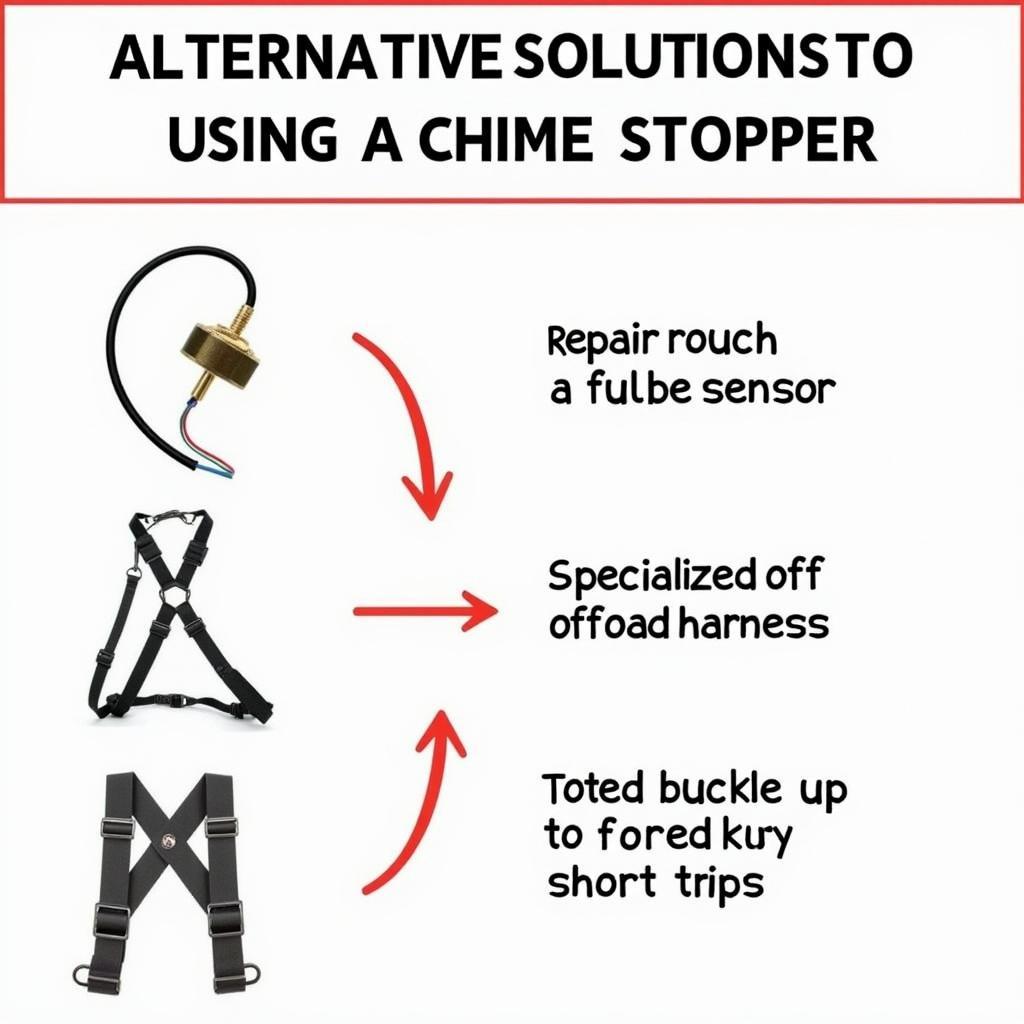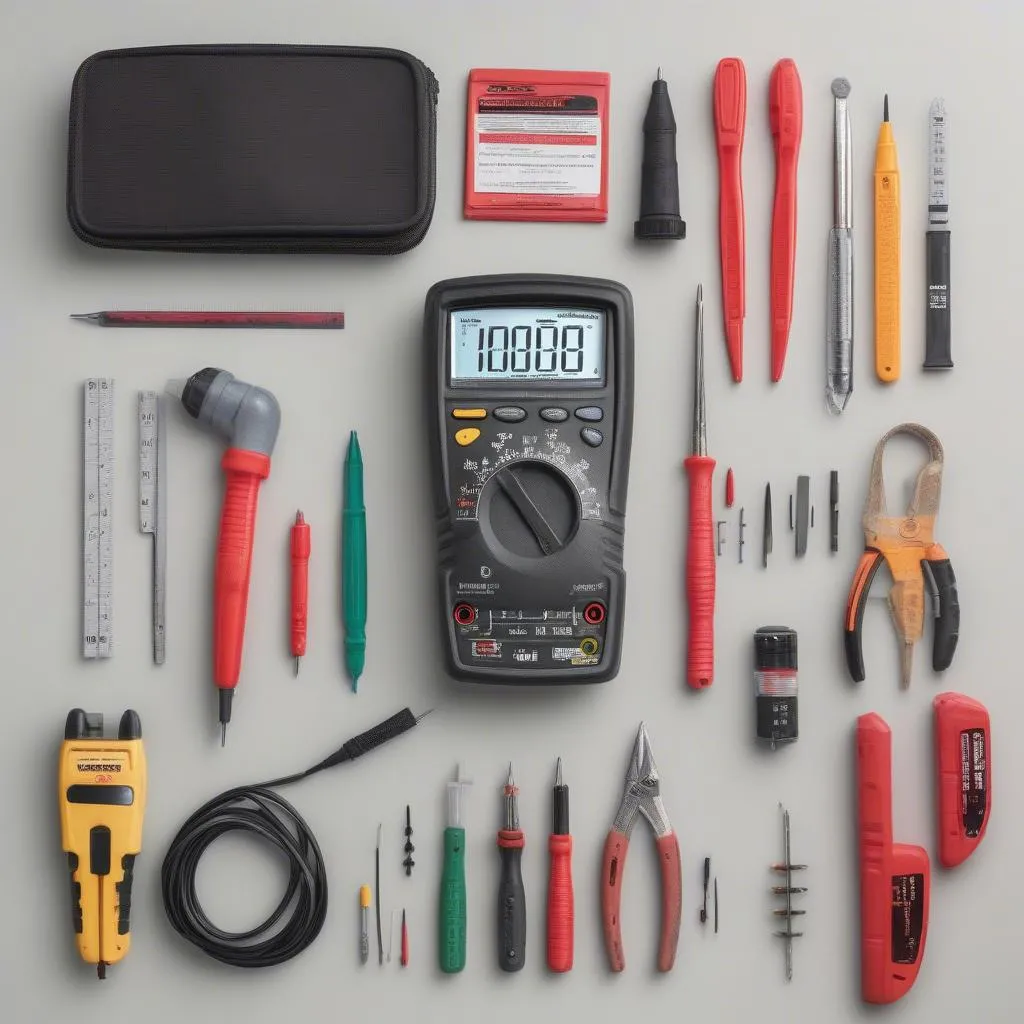A seat belt warning chime stopper can be a tempting solution to the constant chiming when you’re not buckled up. But before you consider one, it’s important to understand the safety implications, legal ramifications, and potential alternatives. This guide explores everything you need to know about seat belt warning chime stoppers, from their functionality and installation to the crucial safety considerations you should never ignore.
Understanding the Seat Belt Warning Chime
The seat belt warning chime is a crucial safety feature designed to remind drivers and passengers to buckle up. This simple chime can significantly reduce the risk of serious injury or death in an accident. It’s a constant reminder of the importance of seat belts, but sometimes, the chime can become a nuisance, especially in specific situations like driving short distances on private property or using a vehicle for off-road purposes. This is where the desire for a seat belt warning chime stopper arises. However, disabling this safety feature comes with its own set of consequences.
Why People Seek Seat Belt Warning Chime Stoppers
There are several reasons why someone might consider a seat belt warning chime stopper. Some people find the chime annoying, especially for short trips. Others might use their vehicle for off-road activities where seat belts might be less practical. Some might even have a faulty sensor triggering the chime unnecessarily. Understanding the reasons behind the desire for a stopper helps us address the underlying issues and explore safer alternatives.
Common Reasons for Using a Chime Stopper
- Short Trips: Many individuals feel the chime is excessive for quick trips within private property.
- Off-Roading: In certain off-road situations, drivers might find the seat belt restricts their movement and prefer to disable the chime.
- Faulty Sensors: A malfunctioning sensor can constantly trigger the chime even when the seat belt is fastened.
- Carrying Heavy Objects: Sometimes, the weight of heavy objects on the passenger seat can trigger the sensor, leading to a persistent chime.
Safety Concerns and Legal Implications
While a seat belt warning chime stopper might offer temporary relief from the chime, it’s essential to weigh the safety risks involved. Seat belts are proven lifesavers, and disabling the chime could lead to complacency, increasing the risk of injury in an accident. Moreover, the legality of using chime stoppers varies by jurisdiction. In some regions, it might be illegal to tamper with safety features like the seat belt warning system.
“Seat belts are your primary safety restraint. Disabling the warning system puts you and your passengers at unnecessary risk,” says Dr. Emily Carter, Automotive Safety Expert.
seat belt warning chime stopper wont go ocf
Exploring Alternatives to Seat Belt Warning Chime Stoppers
Instead of resorting to a chime stopper, consider addressing the underlying issue causing the annoyance. If it’s a faulty sensor, getting it repaired is the safest option. For situations like off-roading, consider specialized harnesses that offer more flexibility while still providing some level of restraint. seat belt warning chime stopper wont go off For short trips, simply buckling up remains the safest and most responsible practice. seat belt warning buckle If the warning light persists, diagnostics and repair might be necessary. seat belt warning light won’t go off
 Alternative Solutions for Seat Belt Chime
Alternative Solutions for Seat Belt Chime
“A persistent warning light or chime is often an indicator of a deeper issue. Get your vehicle checked by a qualified technician to diagnose and fix the problem,” advises John Miller, Certified Automotive Technician.
Seat Belt Warning Chime Stopper Installation and Usage
While we strongly discourage the use of seat belt warning chime stoppers, if you choose to proceed, it’s crucial to understand the installation process. Typically, these stoppers involve manipulating the seat belt buckle receptor or the wiring connected to the sensor. However, incorrect installation can lead to further complications and malfunctions within the vehicle’s safety system. buckle seat belt warning Always consult your vehicle’s manual before making any modifications.
Conclusion
While the allure of a seat belt warning chime stopper might be tempting, prioritizing safety is paramount. Addressing the root cause of the chime, exploring safer alternatives, and understanding the legal implications are crucial steps before considering a stopper. Remember, buckling up is the simplest and most effective way to protect yourself and your passengers on the road. Choose safety, choose life.
FAQ
- Are seat belt warning chime stoppers legal? The legality varies depending on your location. Check your local regulations.
- Can I install a chime stopper myself? While possible, incorrect installation can damage your vehicle’s safety system. Professional installation is recommended.
- What are the risks of using a chime stopper? Disabling the chime increases the risk of injury in an accident by promoting complacency.
- Are there alternatives to chime stoppers? Yes, addressing faulty sensors, using specialized harnesses, or simply buckling up are safer alternatives.
- Why does my chime go off even when I’m buckled up? This indicates a potential fault in the sensor. Get it checked by a professional.
- How can I find a qualified technician to diagnose my seat belt warning system? Consult your vehicle’s manufacturer or a reputable local mechanic.
- What is the best way to silence the seat belt chime? The safest and most responsible way is to simply buckle your seat belt.


